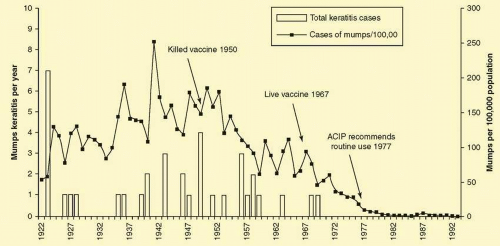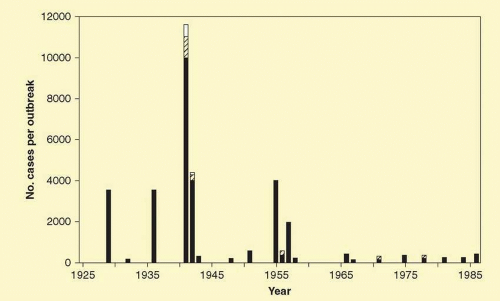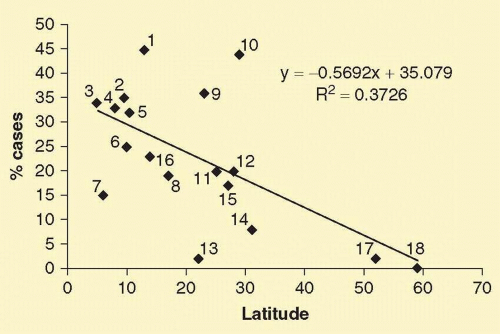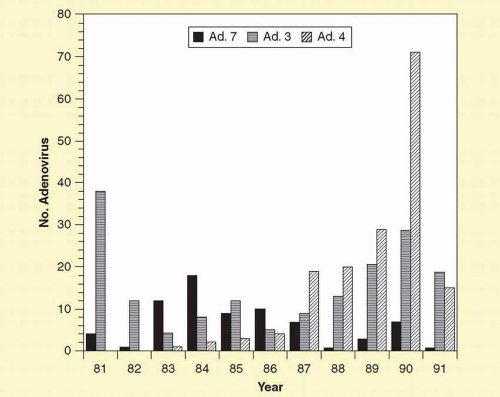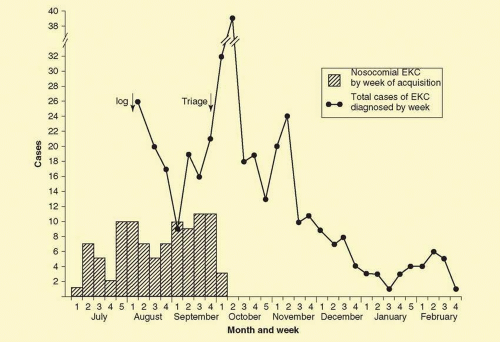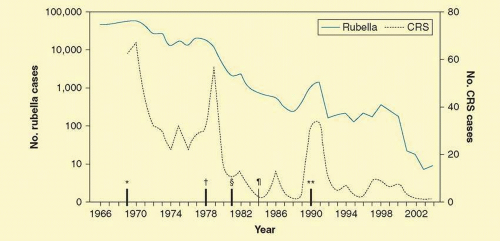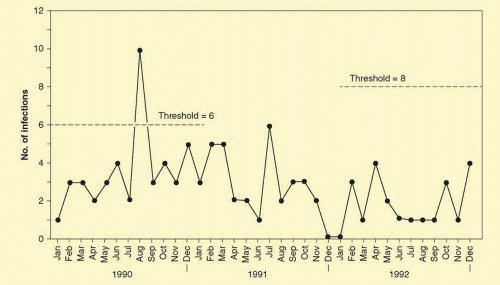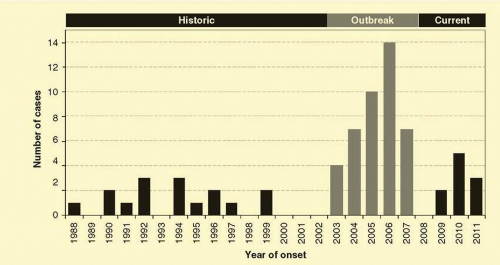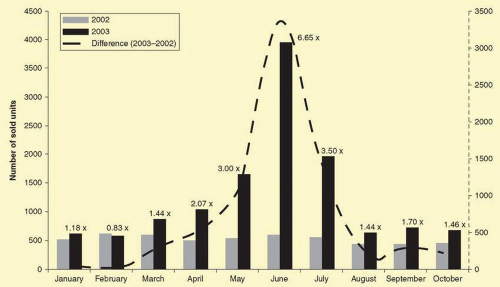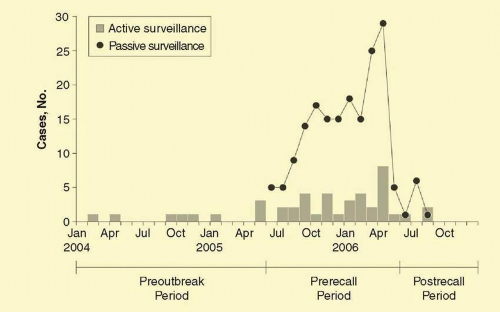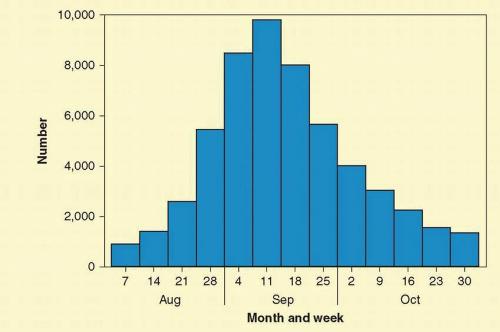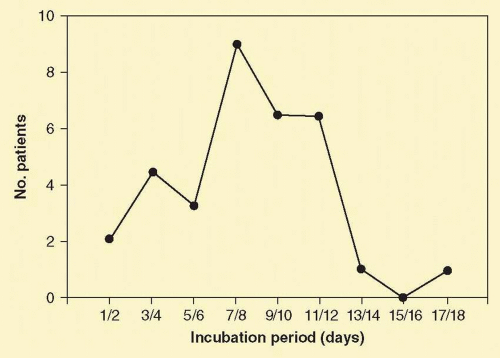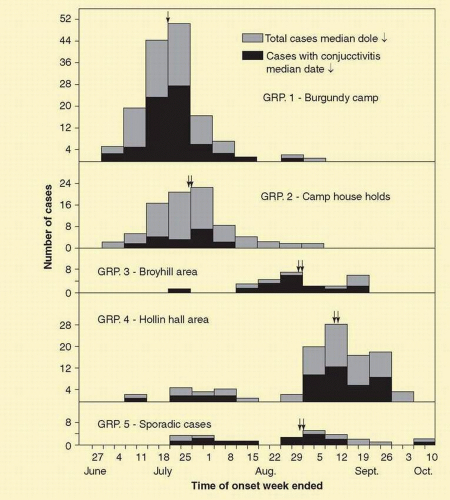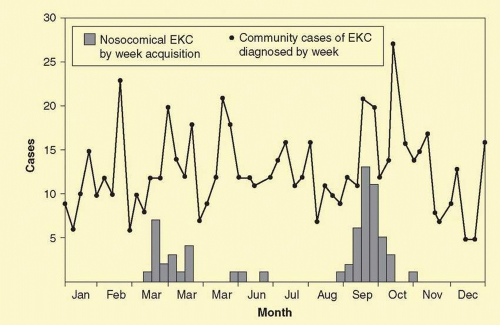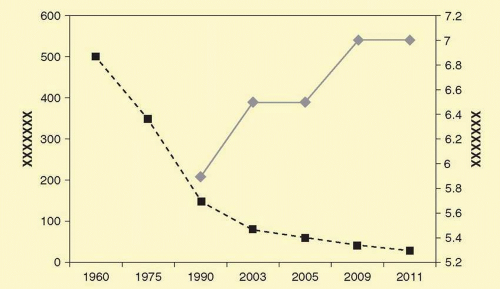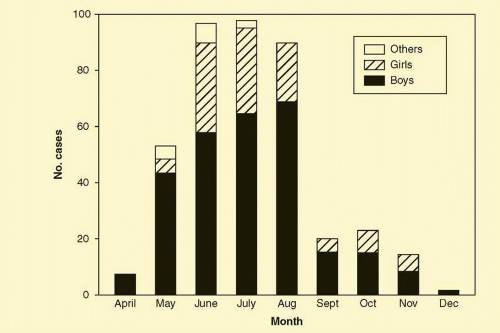Assessment
The beginning of an outbreak may be masked by community-acquired cases or mistakenly thought to be a random event. On the other side of the coin, overinterpreting the chance occurrence of one or more people having similar signs as a true cluster can lead to an unnecessary and burdensome inquiry. The first steps are to establish a case definition and to apply clinical and microbiological criteria to stratify cases as possible, probable, or confirmed.
Defining an infected case takes advantage of laboratory and clinical evidence filtered through knowledge and experience. When sampling takes place through the normal flora of the tear film, the standard for establishing a pathogen might include the detection of the same isolate from sequential specimens, on separate culture media, or by different techniques. But more than diagnostic tests are required. For example, the number of eyes that become infected after cataract extraction is much less than the number transiently harboring intracameral microorganisms.
Surveillance statistics and census data help to distinguish an epidemic that may be superimposed on endemic cases. The threshold for recognizing a cluster depends on the expected background incidence. Prior knowledge of an infection’s rate—from the literature, a national registry, or institutional records—helps to determine the likelihood of a possible outbreak.
73 Postmarketing data and adverse-event reports can aid in detecting a nascent problem.
74Periodic oversight of a center’s pattern of disease can spot nosocomial clusters in the midst of communityacquired cases (
Fig. 44.18). Clinics and surgical centers should have an incident management system.
75,
76 and
77 The person assigned this responsibility regularly tabulates infectious and other critical events.
78 Information can be made available to a disease-specific registry
79 or centralized database.
80 For uncommon infections for which a baseline incidence can be estimated, statistical charts can indicate when the number of cases exceeds that expected by chance.
40,
81,
82An epidemic aggregates in time, but ascertaining a true cluster of apparently similar cases calls for several criteria.
83 An infectious outbreak typically:
Shows a distinctive clustering pattern of infected persons in time and place;
Has a shared route of transmission;
Produces infection selectively among those exposed;
Involves one particular microorganism; and
Is halted by removing the microbial source.
A
pseudo-outbreak is a run of apparently similar but unrelated occurrences. A sequence might be due to chance or to misdiagnosis, either by false-positive interpretation of ocular specimens
84 or from coincidentally overlapping characteristics.
85Once a cluster of infections is recognized, an investigative team is assembled that optimally includes an epidemiologist, clinician, microbiologist, nurse, and administrator. At regular meetings, the team assigns responsibilities, gathers data, and makes decisions. This multidisciplinary group examines case records and laboratory reports, interviews staff, and inspects facilities in an effort to seek reasons and risk factors for infection.
Reconnaissance
Active investigation of an outbreak begins by documenting the basic variables of an epidemic: person, place, and time. A spreadsheet is constructed of all confirmed and suspected cases. This table catalogues the demographic characteristics of each case, the location where each may have been exposed, and the dates of symptomatic onset and of diagnosis. The database itemizes information on fomites and other vehicles that could have transferred infection. At a health care facility, this includes the equipment, devices, and solutions with serial or batch numbers, as well as the personnel who made patient contact.
An essential task is to characterize the disease. Laboratory criteria should be reviewed to differentiate infection from inadvertent contamination.
86 Distinguishing an infectious from a noninfectious etiology may not be straightforward, even when hundreds are affected.
87Identifying the causative microorganism is fundamental to the investigation of an infectious disease. Successful pathogens usually replicate as a clone, so a cluster of ocular infections is recognizable by the phenotypic and genotypic similarity of microorganisms recovered from different patients. Even when the presence of different strains or multiple species excludes a common source, the investigation might still uncover routine procedures that need attention.
Goals of the exploratory phase are to determine the sequence of events and the route of transmission. The investigative team should observe procedures as currently practiced, including patient entry and exit routines. A sociogram or contact matrix can depict the path of spread in the network of transmission.
Analysis
Graphics help to communicate the attributes of person (e.g., age distribution), place (e.g., dot map), and time (e.g., epidemic curve). Plotting the locations where exposure could have occurred, whether operating rooms or patient residences, may disclose environmental links. Comparing genetic analysis of ocular isolates with the characteristics and geographic distribution of infected patients could also reveal routes of dissemination during widespread outbreaks.
88Environmental assessment is particularly relevant for clusters of infection occurring after surgery. The obvious places to look are the preparation area, operating room, and recovery suite. Construction projects in other parts of the hospital and the ventilation system should also be considered as a source of airborne microorganisms.
89,
90 Airflow can be tested, and a faulty air-conditioning system should be fixed.
91 The use of the facility by other services should be examined and correlated with the cases.
Technical staff should demonstrate that devices used for ophthalmic examination and surgery meet sterility requirements. Equipment maintenance and instrument cleaning should be verified. The time of replacement of reused supplies is checked, and the proper disposal of single-use instruments and solutions evaluated.
Samples can be taken from selected materials and personnel. Instruments and devices, such as a phacoemulsification machine, may need to be separately cultured. Tubing is flushed for microbiological processing because cannulas can harbor microorganisms and allow an apparatus to be persistently contaminated.
90,
92
Infection Control
A
root-cause analysis should prioritize the critical control points in the clinical process and pinpoint where contamination and exposure could happen.
93,
94 By itemizing the various stages of patient flow, apparent problems in routine practice might be found. Even when infections cannot be traced to an identifiable vehicle or route, a systematic investigation may reveal opportunities for improving regular procedures. For example, epidemics of fungal and protozoal infections among contact lens wearers led to the withdrawal of contact lens solutions although a point source of contamination was not established.
95The objective of outbreak control is to avert further cases. Immediate steps of infection control include routine hand washing, regular cleaning and disinfection of contact instruments, and disposal of opened medications and solutions.
96 Patients who are possibly infectious may be segregated into a different waiting area and given separate appointment times. Gloves and other personal protective equipment for all examiners may be advised.
97A lack of symptoms does not exclude a person from harboring an ocular pathogen.
98 Staff who are infected or colonized with the causative microbe should be furloughed. Operating rooms must adhere to standards of ventilation, disinfection, and sterilization.
99 Each procedure should be aseptically separate, among patients and between eyes of the same patient. Prevention begins with hygiene and antisepsis but extends to modifying behavior.
The findings and recommendations of an outbreak investigation should be clearly summarized and disseminated. Premature discontinuation of infection-control measures can allow an outbreak to start anew (
Fig. 44.19). Proposals need to be incorporated into an operational policy that integrates practice guidelines.
100,
101 Sometimes, a revision of the overall care pathway might be proposed.

